
What is Laminated Dough?
What makes a croissant so special? Although butter might be an obvious answer, it is really the process of lamination that creates the magic. Even if the term lamination is unfamiliar, you’ve probably eaten pastries that use this technique, such as croissants, Danish, puff pastry, and cruffins. The delightful flaky, buttery layers in these pastries result from lamination.
Lamination refers to the process of butter and dough being repeatedly rolled and folded together. This technique creates increasingly thinner alternating layers of butter and dough. When the dough is baked, the water within the butter turns into steam, separating the dough and forming distinct layers. The result is a flaky, buttery pastry with a light interior and a crispy, golden-brown exterior.
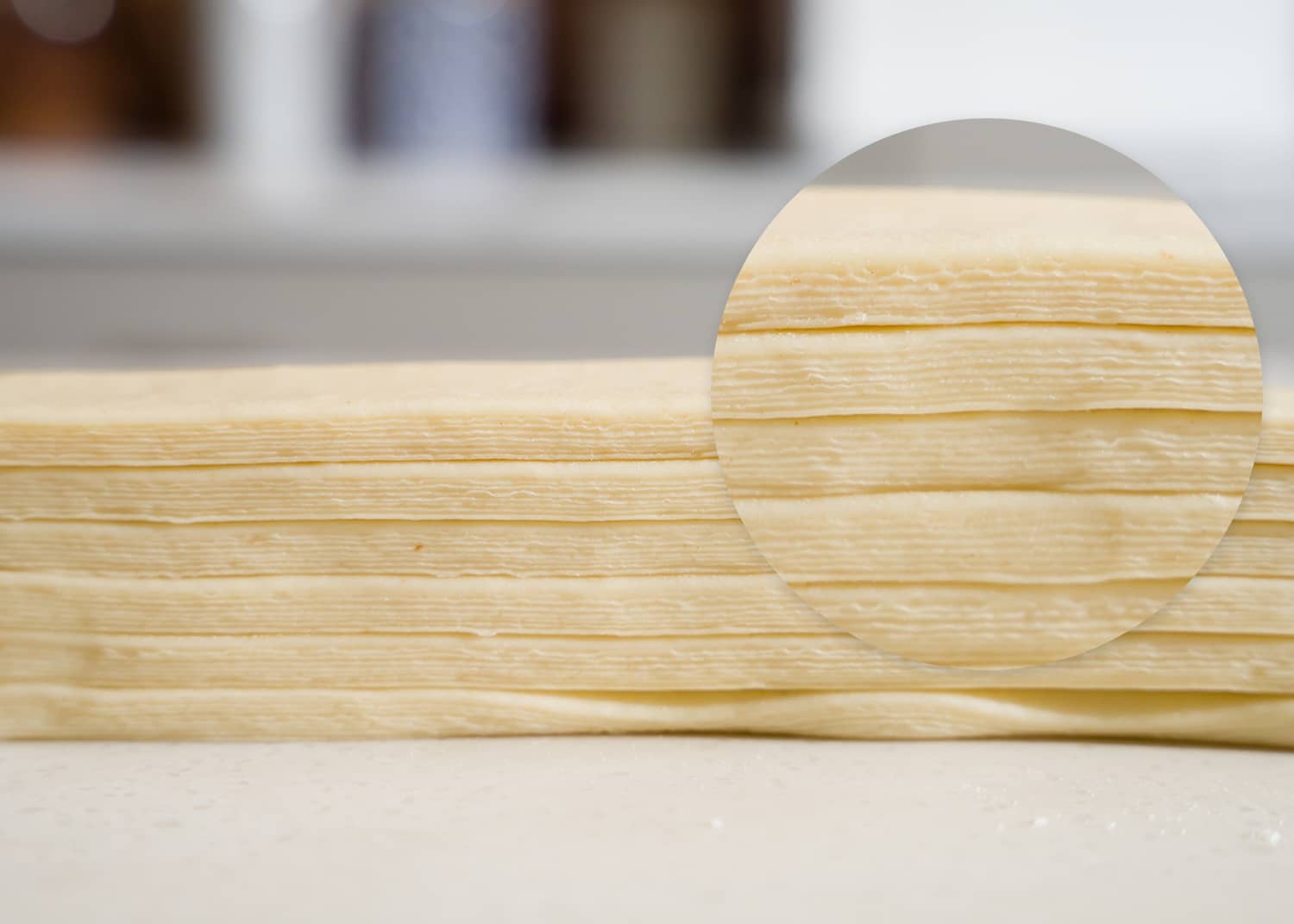
Laminated Dough 101
Successful lamination involves maintaining the integrity of the layers throughout the process. The goal is to achieve thin, distinct, and intact layers of butter and dough. If cut in cross-section, each individual layer should be visible.
Steps in Lamination
Make the dough block: The dough block is typically mixed a day before lamination. This rest period allows the dough's gluten to relax and enhances the dough's flavor. The dough may include enrichments like eggs, milk, and butter. It may or may not contain a leavening ingredient such as yeast or sourdough starter.
Make the butter block: Professional bakers can buy pre-shaped thin sheets of butter. Home bakers need to make the butter block themselves. Butter is placed between sheets of plastic, parchment paper, or wax paper, then pounded with a rolling pin to make it more pliable before shaping into a square or rectangular block.
Plasticity - This is a term commonly used to refer to the pliability of the butter. The butter should be malleable, like clay, but not soft and melty.
Lock-in the butter: The lock-in is the initial encasing of the butter in the dough. The dough is rolled to a larger size than the butter block, the butter is placed on top of the dough, and the dough is folded over the butter, encasing it in dough.
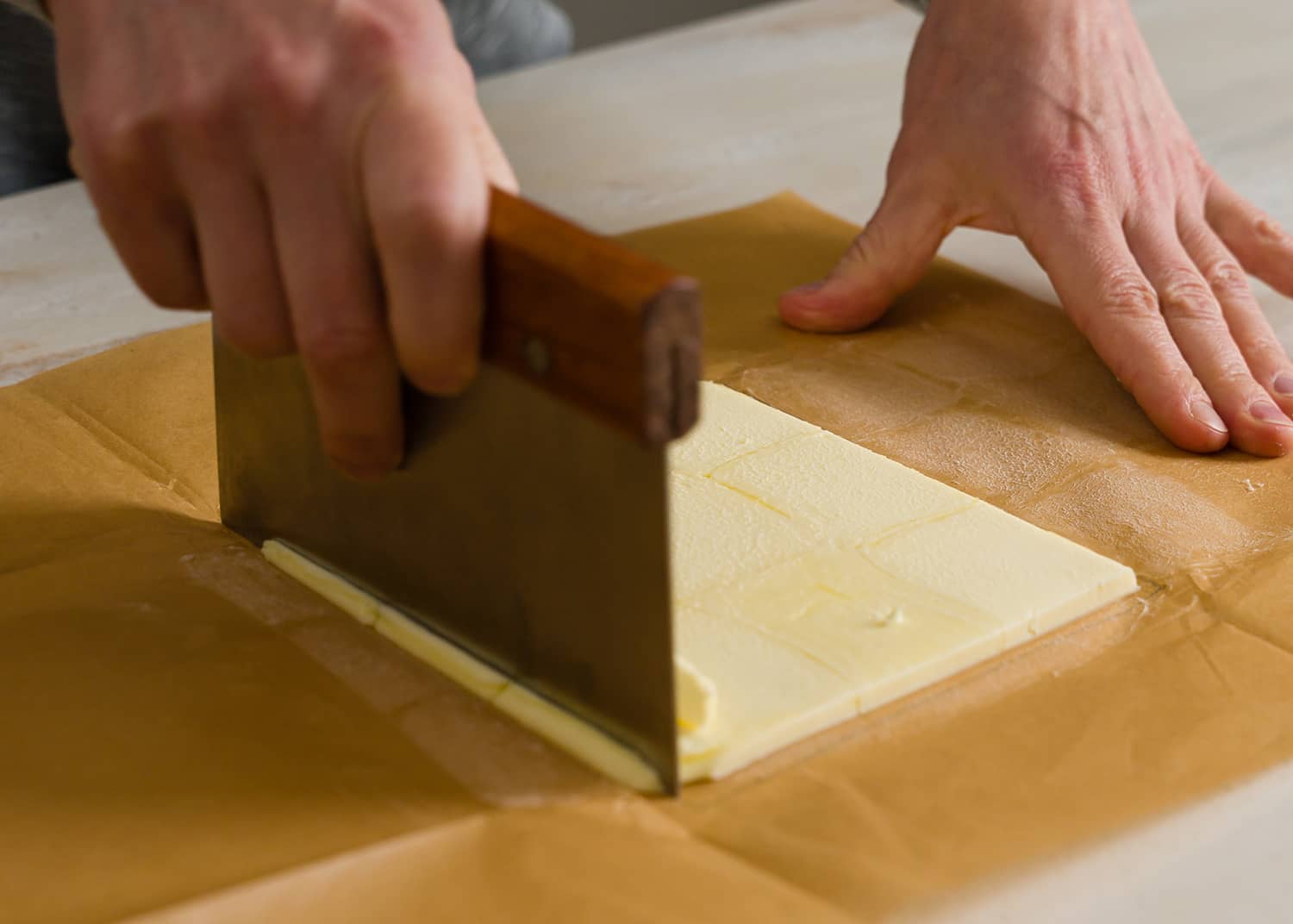
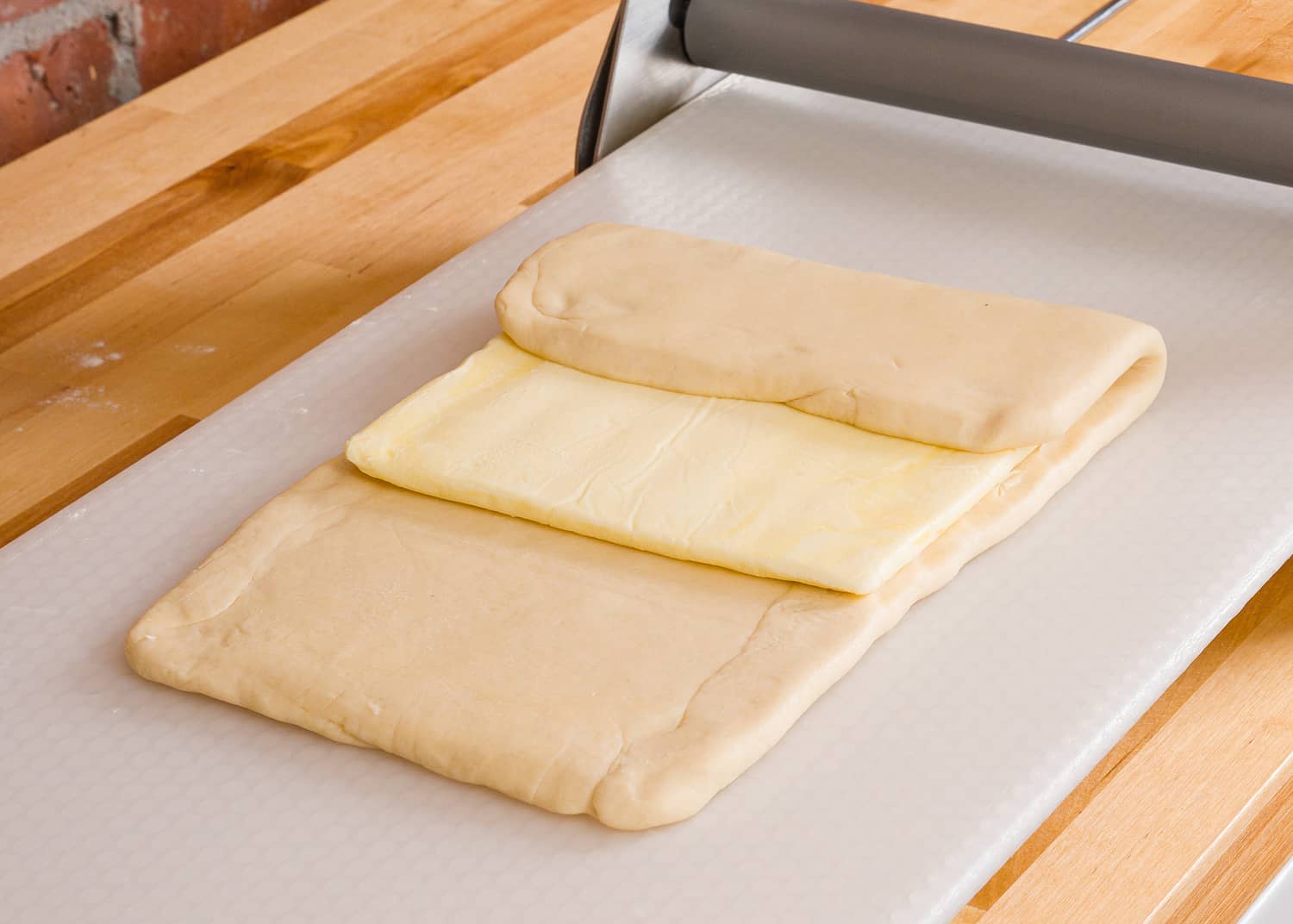
Rolling & Folding: After the lock-in, the dough and butter are rolled out. If the butter is at the correct temperature, it will roll out evenly with the dough, maintaining a separate layer. After rolling, the dough is folded onto itself to create more layers. Each time the dough is rolled and folded, more layers are created.
Rest - After the initial rolling and folding, the dough is chilled. This rest period allows the gluten to relax and prevents the butter from becoming too soft, which could otherwise compromise the layering.
Turn - After resting, the dough is turned 90 degrees from the direction it was last rolled in before it's rolled again. Turning ensures the dough is stretched equally in a different direction, preventing its gluten from becoming overworked and making it easier to roll.
Bakers often use the term “turn” to denote a complete cycle of rolling and folding. For example, stating that croissant dough has had three “turns” means it has undergone three cycles of rolling, folding, and turning.
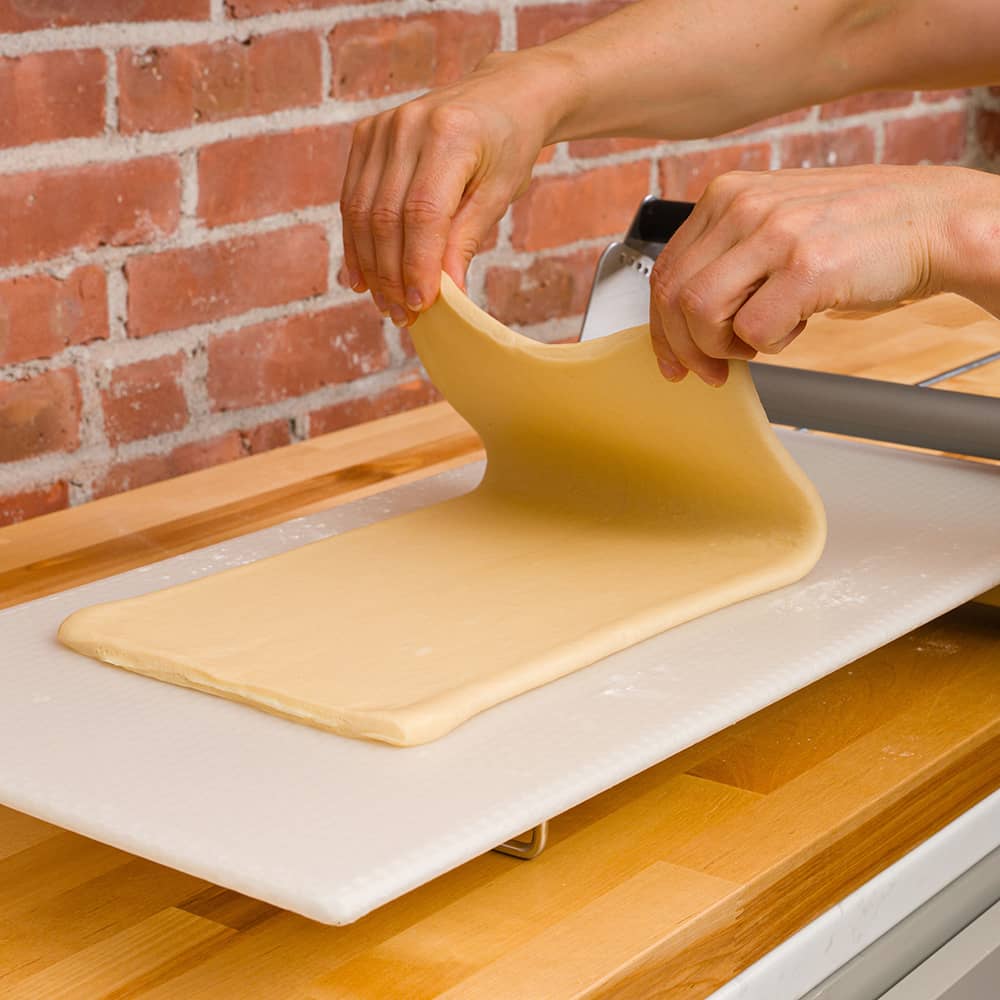
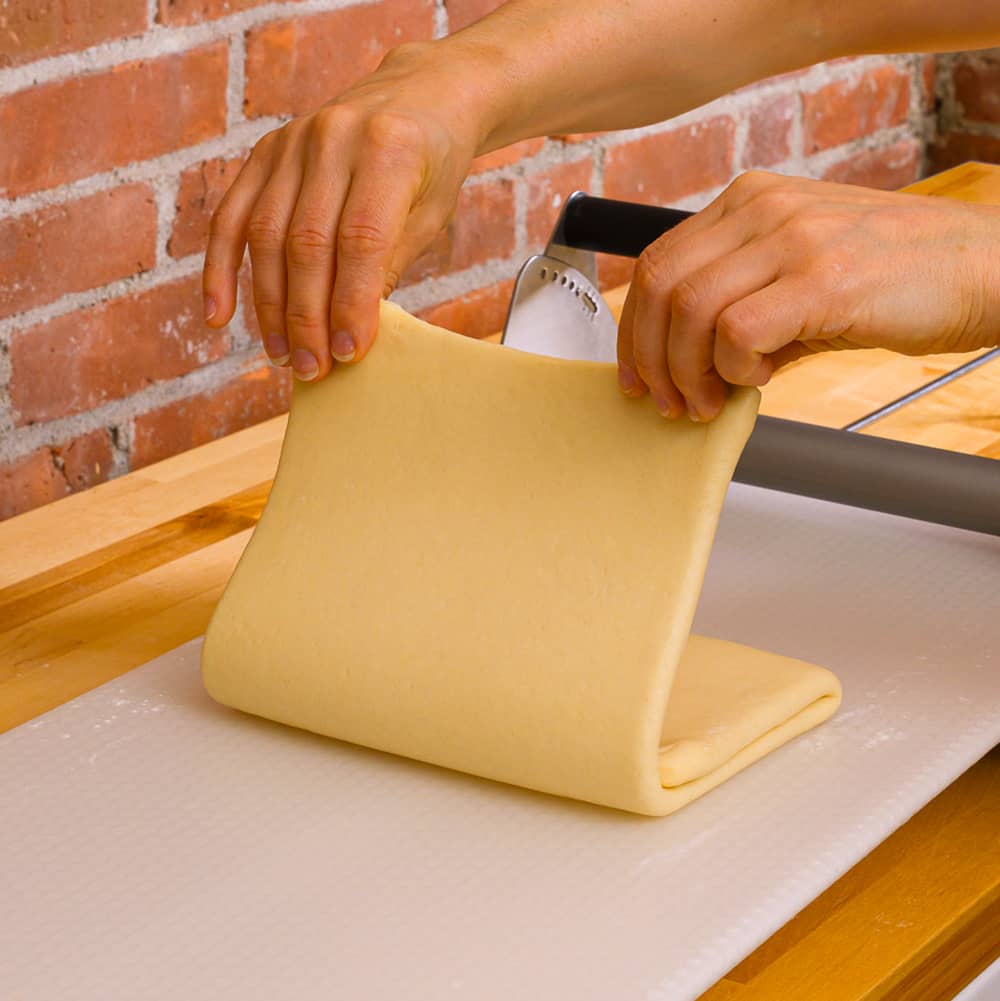
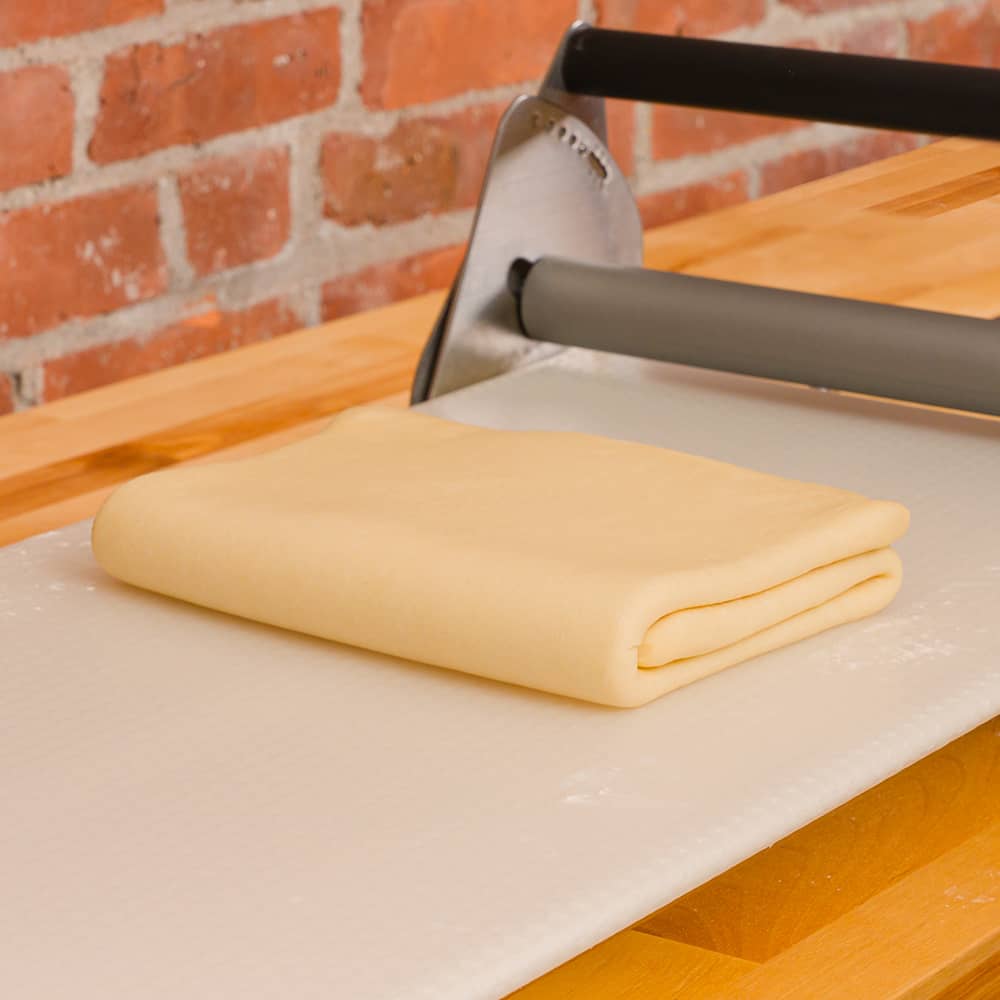
Depending on the desired number of layers or the specific texture aimed for in the final pastry, these steps of rolling, folding, resting, and turning can be repeated multiple times. Classic puff pastry, for instance, receives many folds, resulting in a very delicate and flaky pastry. A chocolate croissant receives fewer folds, creating a sturdier structure.
At this point, the lamination is complete. Next, the dough is rolled to its final thickness, cut, shaped, proofed (if the recipe is yeasted), and then baked.
The Role of a Dough Sheeter
Rolling laminated dough by hand can be labor-intensive. Using a dough sheeter can be a game-changer when making laminated dough. Not only does it streamline the lamination process by saving time and reducing manual labor, but it also ensures the consistent thickness and accuracy of your dough's layers. Plus, because it allows you to move through the process quicker and handle the dough less, there's less chance of the butter layers becoming too warm. Professional bakers use commercial dough sheeters—mechanical devices that roll the dough back and forth, doing the hard work for you. However, these are impractical for home use due to their cost and size.
Our manual tabletop dough sheeters offer the perfect solution for bakers looking for the benefits of a commercial sheeter in a smaller, more convenient package. Our 12” Compact Dough Sheeter is ideal for those wanting a smaller device. It has 10 thickness adjustments and can accommodate roughly 675g of dough at a time. The 15.5” Folding Dough Sheeter is perfect for those with more space and larger batch sizes. It has an adjustment range of 0-27mm with 0.5mm increments and can accommodate roughly 1350g of dough at a time.
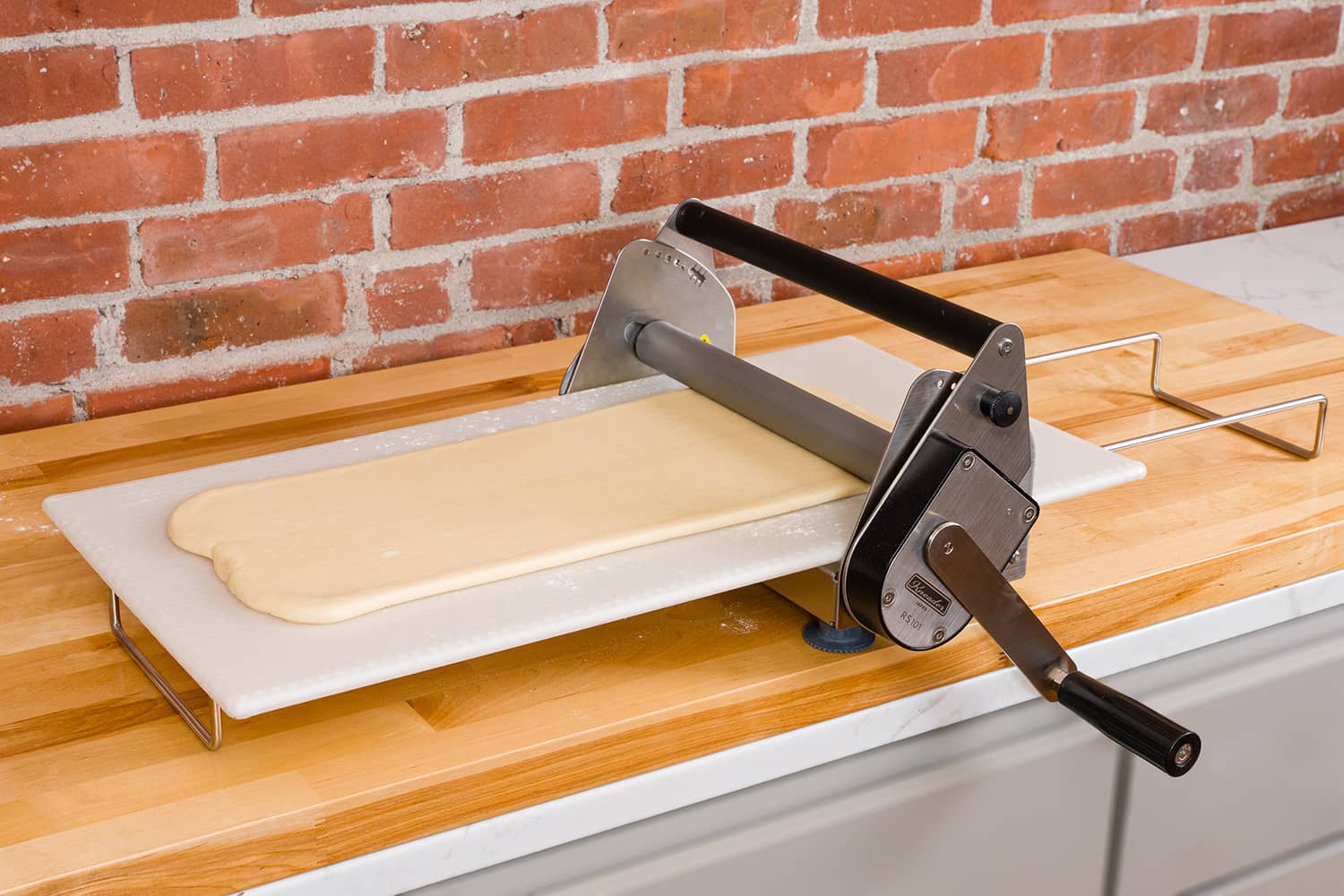
12” Compact Dough Sheeter
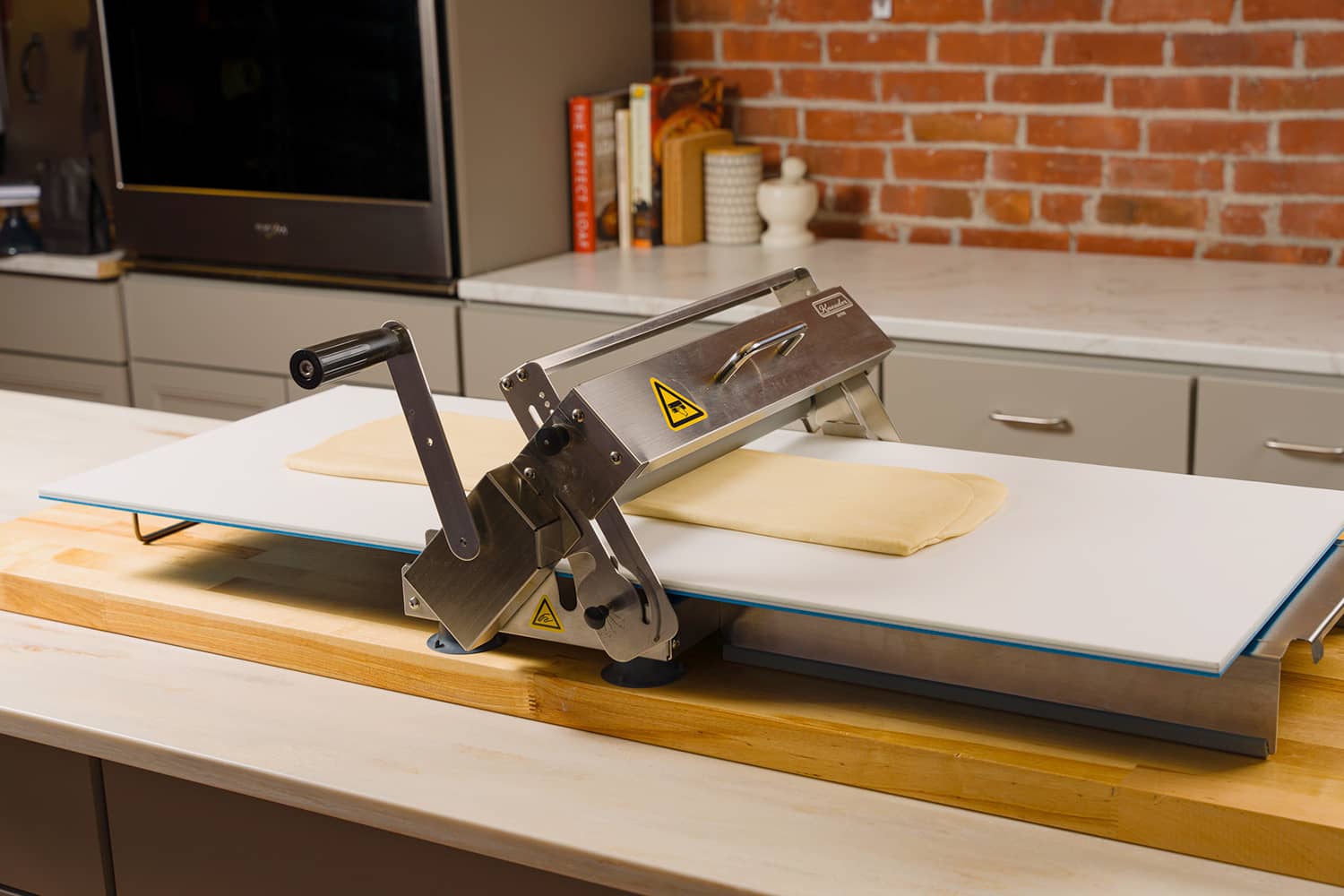
15.5” Folding Dough Sheeter
Featured Recipes
Ready to get rolling? Check out some of our favorite laminated dough recipes featuring our manual dough sheeters.

Cruffins
Homemade cruffins are a special treat indeed. Croissant dough that is baked in a muffin tin. A cross between a croissant and a muffin, this special pastry retains all the flaky, buttery layers croissants are known for, but because of the molds they are baked in, resemble the shape of a muffin.
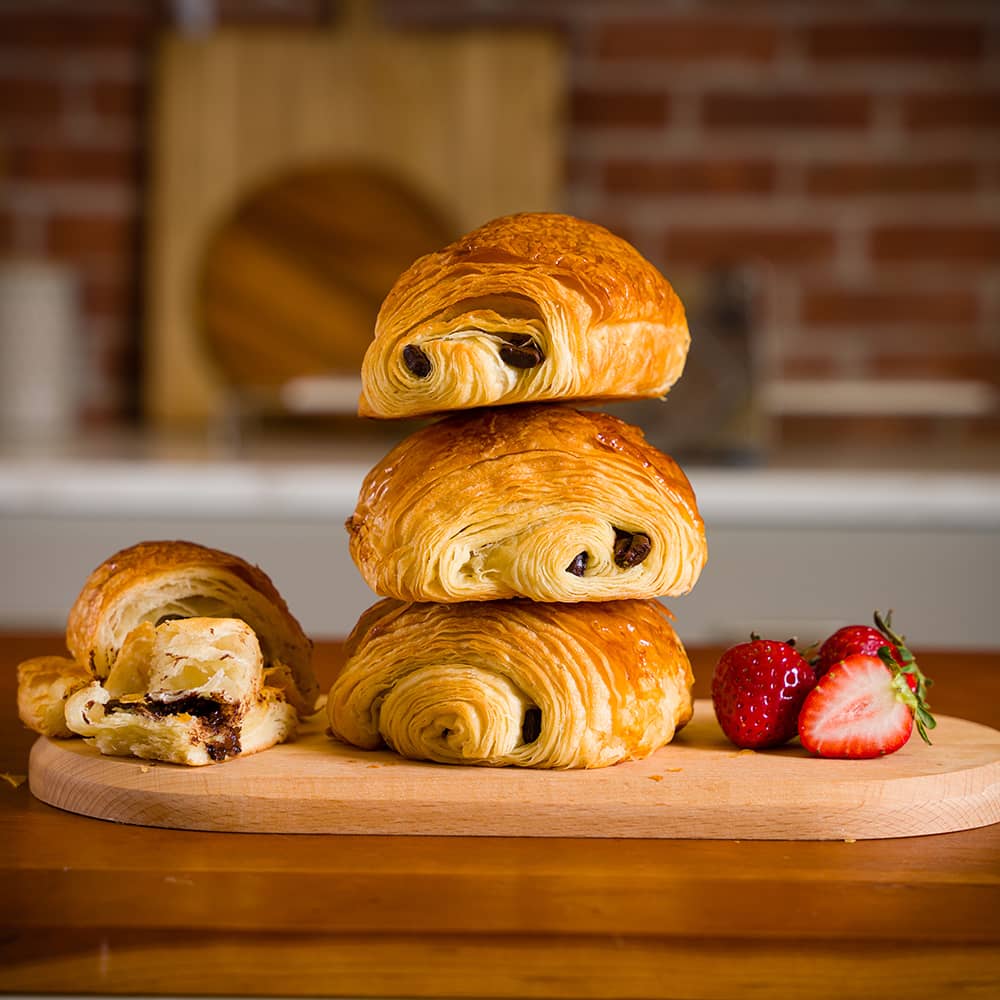
Pain au Chocolat
Pain au Chocolate, one of the most well-known French pastries, are a special treat you can enjoy any time of day. Flaky croissant dough is cut into rectangles rather than triangles and then wrapped around two chocolate batons. Fresh from the oven, the chocolate is still warm and melty, making this pastry a true joy to eat. Follow our detailed instructions below to make the best chocolate croissants.
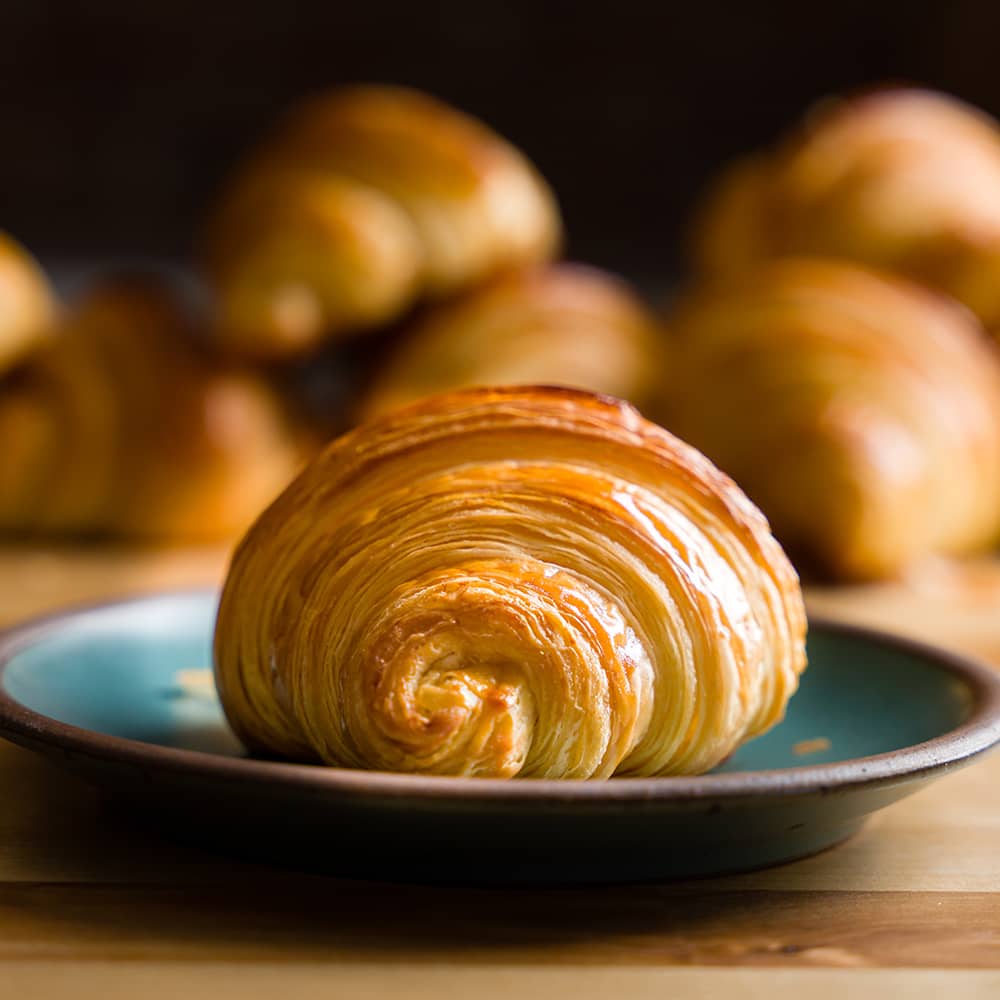
Homemade Croissants
Indulge in the delicious delight of a classic French pastry with flaky, buttery layers! While making croissants at home is not the easiest project to tackle, it is among the most rewarding. Even if your initial attempt falls short of expectations, your croissants will still be tasty. With practice and patience, your skills will improve, and your croissants will get better and better. Follow the steps provided below to learn how to make croissants from scratch.

















Deja un comentario
2 comentarios
Would love a recipe for Italian bread, not sourdough. A bread recipe that soft inside and hard crust to be used with your steel shelf and shell.
Katherine – Thanks for the suggestion! We have a few things in the works, so keep an eye out for some recipes featuring the shell & steel.